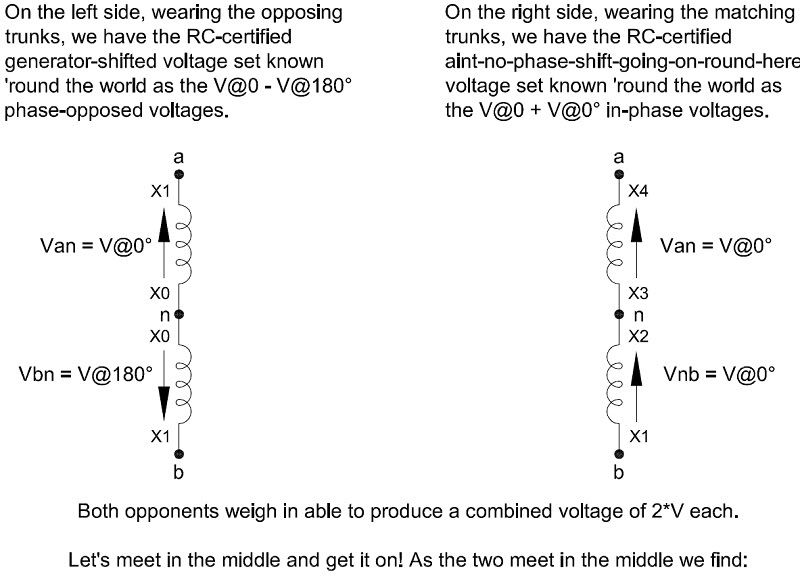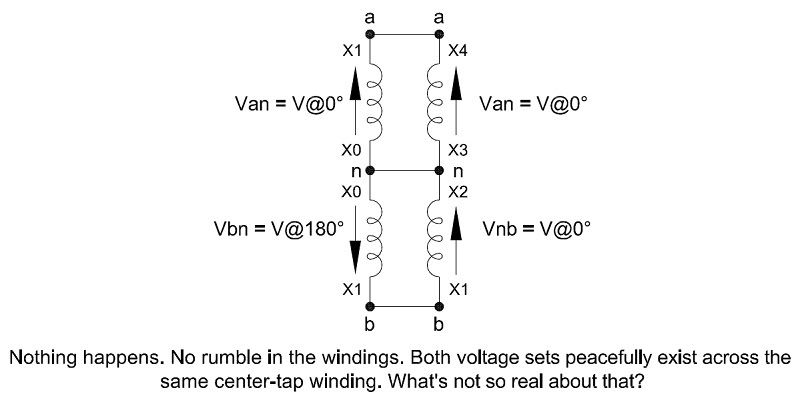mivey
Senior Member
"energy in the wire"
"energy in the wire"
On energy flowing in a wire:
I'll address energy flow one more time even though I haven't heard but one member say that energy is not carried in the electromagnetic fields. The idea that energy is carried in the wire by the electrons acting like coal cars is just pure ignorance of how electricity works. The electrons do not scoop up energy and drop it off at the load as they pass by. I do not believe any competent electrical engineer on this forum thinks that way; but it would not be my first surprise.
The simple analogy of an electron picking up a measure of energy and transporting it through a medium to the load at the other end is just wrong. Simple coal-car type analogies are sometimes used at a very elementary level to talk about electricity but really only create a stumbling block for those that go on to learn more in the future. There is some energy in the wire that is dissipated in ohmic losses but the energy to the load is carried in the electromagnetic field surrounding the wire. The energy in a coaxial cable travels in the field between the outer and inner conductor.
Energy travels towards the load, not necessarily in the direction of current. Current is charge flow and is not the same thing as energy flow. Current (charge flow) moves very slow as compared to energy which flows at near light speed. Current and energy flow can be in opposite directions.
Whether the ignorance about how electricity works is a result of a bad student or a bad teacher does not really matter at this point. What matters is that if someone does not understand that energy is carried in the electromagnetic wave, it is time they got their education up to date. I'll be glad to help someone who really wants to learn, but there is little help for someone who has no desire to learn.
If anyone here has this "energy in the wire" misconception or may have been confused by some mis-informed posts by those lacking sufficient knowledge, let me give you some food for thought before you speak without thinking:
What causes EMF problems if the energy is contained in the wires? Why does the EMF problem decrease as the wires are brought together?
What causes inductive heating if the energy is contained in the wire? Why does keeping the wires together fix this problem?
Electrons do not jump the gap in a capacitor neither do they jump the gap in a transformer, but the energy still gets through.
If an electron is carrying energy to the load as it flows from the source to the load, then a different electron would take energy from the load as it flows from the load to the source and the load would get a net zero delivery of energy.
"energy in the wire"
On energy flowing in a wire:
I'll address energy flow one more time even though I haven't heard but one member say that energy is not carried in the electromagnetic fields. The idea that energy is carried in the wire by the electrons acting like coal cars is just pure ignorance of how electricity works. The electrons do not scoop up energy and drop it off at the load as they pass by. I do not believe any competent electrical engineer on this forum thinks that way; but it would not be my first surprise.
The simple analogy of an electron picking up a measure of energy and transporting it through a medium to the load at the other end is just wrong. Simple coal-car type analogies are sometimes used at a very elementary level to talk about electricity but really only create a stumbling block for those that go on to learn more in the future. There is some energy in the wire that is dissipated in ohmic losses but the energy to the load is carried in the electromagnetic field surrounding the wire. The energy in a coaxial cable travels in the field between the outer and inner conductor.
Energy travels towards the load, not necessarily in the direction of current. Current is charge flow and is not the same thing as energy flow. Current (charge flow) moves very slow as compared to energy which flows at near light speed. Current and energy flow can be in opposite directions.
Whether the ignorance about how electricity works is a result of a bad student or a bad teacher does not really matter at this point. What matters is that if someone does not understand that energy is carried in the electromagnetic wave, it is time they got their education up to date. I'll be glad to help someone who really wants to learn, but there is little help for someone who has no desire to learn.
If anyone here has this "energy in the wire" misconception or may have been confused by some mis-informed posts by those lacking sufficient knowledge, let me give you some food for thought before you speak without thinking:
What causes EMF problems if the energy is contained in the wires? Why does the EMF problem decrease as the wires are brought together?
What causes inductive heating if the energy is contained in the wire? Why does keeping the wires together fix this problem?
Electrons do not jump the gap in a capacitor neither do they jump the gap in a transformer, but the energy still gets through.
If an electron is carrying energy to the load as it flows from the source to the load, then a different electron would take energy from the load as it flows from the load to the source and the load would get a net zero delivery of energy.



